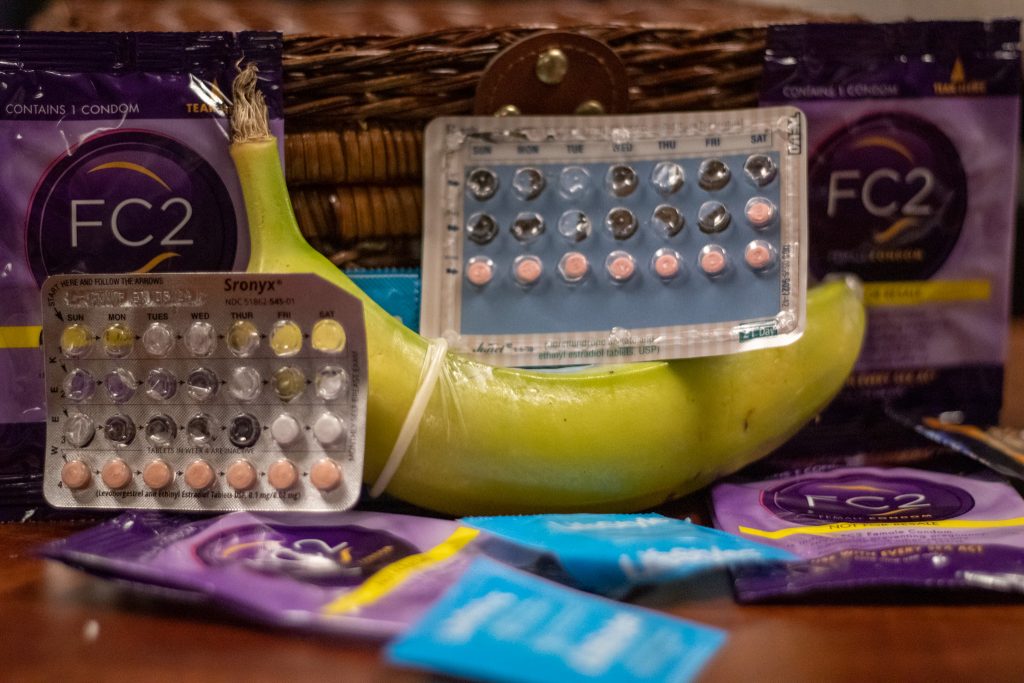The following information and statistics were sourced from the Planned Parenthood Federation of America.
A surge of uncertainty regarding birth control access has plagued the United States after the overturn of Roe v. Wade last June, making the dissemination of resources, costs and state availability all the more fundamental. To many, birth control cannot be provided through the means of insurance coverage due to a host of barriers such as eligibility, privacy concerns, citizenship status and so on.
While there are many government programs that offer subsidization, including Medicaid, Planned Parenthood centers and other state-sanctioned programs, they are not accessible to everyone. In the absence of health insurance or alternative options, the out-of-pocket cost of birth control can be heavy. It is therefore important to be transparent about expenses and understand the current state of health care in the United States.
For this reason, Pipe Dream sent out an anonymous survey to Binghamton University’s student body, inquiring about which methods of birth control students are currently relying on. The aim is twofold — to offer a broad insight into which methods are commonly used across campus and to weigh which ones should be addressed accordingly. Based on the survey, here is a general overview of students’ most common methods of birth control, as well as their use, durability and out-of-pocket cost.
Birth Control Pill (Combination pills and Progestin-only pills)
What is it?
Commonly referred to as “the pill,” this type of birth control runs on a timely schedule and prevents pregnancy by ceasing ovulation and thickening the cervix to disrupt fertilization. The pill consists of two types, combination pills — synthesizing estrogen and progestin — and progestin-only pills. Both kinds of pills work similarly — however, progestin-only is more subject to a strict, continuous schedule.
Durability
The combination pill protects from pregnancy so long as a pill is taken every day. The progestin-only pill also has to be more rigidly used within the same 3-hour period.
Cost
$0-$50 per pack
IUD (Hormonal and Copper)
What is it?
An IUD, or Intrauterine Device, is a very small agent that is inserted into the uterus to prevent pregnancy. Like the pill, IUDs are divided into two broad types — hormonal and copper. Hormonal IUDs prevent pregnancy via the hormone progestin, and copper IUDs prevent pregnancy by activating an inflammatory response and obstructing conception.
Durability
Hormonal IUDs include Mirena, Kyleena, Liletta and Skyla, all of which operate on progestin and differ only in how much of the hormone is used — and therefore, how long it lasts. The copper IUD, known as the Paragard IUD, can work for up to 12 years.
Cost
$500-$1,300, contingent on required exams, follow-up visits, the type of IUD and insurance.
Birth Control Implant (Nexplanon)
What is it?
The Nexplanon implant is a tiny rod that is inserted into one’s upper arm and releases progestin to prevent pregnancy. The progestin from the implant works in similar ways to that of other birth controls by safely disrupting ovulation and fertilization.
Durability
While Nexplanon can work for up to five years, it is not permanent and can be removed by a doctor to resume ovulation.
Cost
Insertion can reach $1,300, and removal can cost up to $300.
NuvaRing
What is it?
The Nuvaring is a small, flexible ring that is self-inserted into the vagina, and releases both estrogen and progestin. Like many other birth controls, these hormones prevent pregnancy by blocking ovulation.
Durability
The ring lasts for 5 weeks, and therefore should be replaced about once a month. Maintaining a strict replacement schedule is essential to achieve maximal effect.
Cost
$0 – $200 per NuvaRing, and prescription appointments can range around $35-$250.
Depo-Provera Shot
What is it?
The depo shot in an injection that contains progestin, which as previously mentioned prevents ovulation and thickens the cervical wall.
Durability
The depo shot’s effect lasts up to 12 to 13 weeks, requiring a new injection around four times a year.
Cost
The first shot will typically entail a preliminary exam, making the initial cost $0-$250. Subsequent injections usually cost $0-$100.
Condoms
What is it?
Condoms are thin, flexible covers that surround the penis during sex, trapping semen from entering the vagina. Condoms consist of three types — latex, plastic and lambskin. The most common are latex condoms, which are made from rubber and protect against both pregnancy and STDs. Plastic condoms use latex alternatives, protect from pregnancy and STDs, and are substitutes for those with latex allergies. Lambskin condoms are made from animal intestines, and while they aim to prevent pregnancy, they do not protect against STDs.
Durability
Condoms are to be worn properly and limited to single usages. When purchasing, it’s important to reference the expiration date to ensure reliability.
Cost
Condoms are sold at most drugstores, health centers, supermarkets, etc. and are relatively cheap. Costs of condoms depend on the amount per pack, the brand, the type, as well as other factors. Typically, when bought in bulk, boxes cost $20 or less.
To reiterate, the above costs are comprehensive statistics for when health insurance is not applied. The Affordable Care Act, otherwise known as Obamacare, ensures that most insurance plans cover the costs of birth control. However, the stark reality is that many don’t have or cannot use insurance for an array of factors. The premise of acknowledging the raw prices of birth control is to expand the dialogue around health care and promote a conscious campus atmosphere.
On-campus sexual health resources:
Health Promotion and Prevention Services (https://www.binghamton.edu/hpps/health-ed/sexual-health.html)
Decker Student Health Services (https://www.binghamton.edu/health/services/index.html)
VARCC (https://www.binghamton.edu/centers/varcc/index.html)
The Q Center (https://www.binghamton.edu/centers/lgbtq/aboutus.html)



